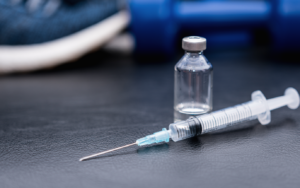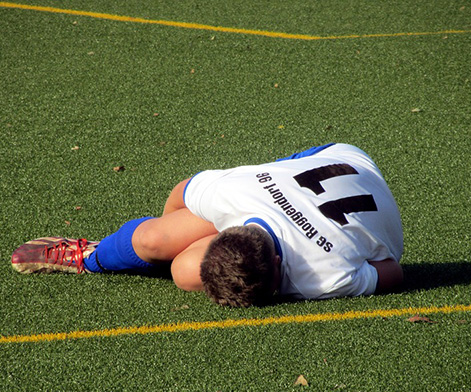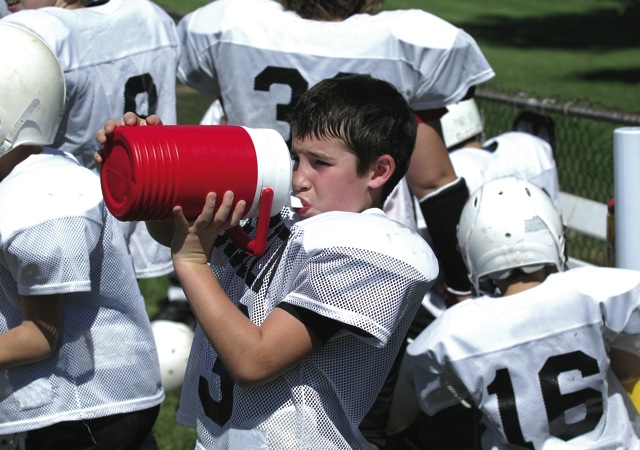PEDs in Sports: The ongoing fight
The sporting world was once again turned upside-down when whistle-blower Grigory Rodchenkov alleged in a BBC interview that Russia ran a systematic program of doping during the Sochi Olympics in 2014. These allegations were presented in disturbing detail via Rodchenkov’s testimony as compiled in the World Anti-Doping Agency’s (WADA) McLaren Report.
 As the director of Russia’s “anti-doping” lab, he shared the elaborate schemes and protocols that were devised to create substances to enhance athletes’ performance, while also contriving a plot to switch urine samples to avoid detection.
As the director of Russia’s “anti-doping” lab, he shared the elaborate schemes and protocols that were devised to create substances to enhance athletes’ performance, while also contriving a plot to switch urine samples to avoid detection.
The revelation of this evidence led to Russia’s ban from February’s Winter Olympic Games in South Korea. Rodchenkov is now in hiding under protection in the U.S. He says he is apologetic for what he did, especially for the fact that hard-working, clean athletes were deprived of a level playing field because of his unethical and illegal actions. In his words, “I regret, repent, and will continue my cooperation to make great steps to be remembered in a good sense.”
Lessons from Sochi
Rodchenkov’s apology probably doesn’t resonate with the athletes who competed fairly with honor and integrity. He should be given some credit, however, for exposing this travesty and for giving the International Olympic Committee (IOC) and all athletic organizations a resounding wake-up call.
The PED problem in athletics is nothing new. It spans several decades, especially at the international amateur level. One chemical mess is no sooner cleaned-up when another follows shortly behind. Unscrupulous behavior by governments, team administrative staffs, physicians, coaches and athletes will never be completely remedied. A win-at-all costs approach — regardless of rules, health concerns, regulations, laws and standards of fair play — will always affect athletics at every level.
This is why random, year-round, unannounced testing procedures and ongoing education are so very important. There will always be individuals working feverishly to circumvent the system; there will always be cheaters.
It’s the expressed duty of the leaders, organizers, administrators and coaches at every level to do everything in their power to stay at least one step ahead of those who make the conscious decision to cheat the system.
Common PEDs
Testosterone is a naturally occurring, endogenous substance produced by the body. It has myriad roles in normal human system functioning, including development of male secondary sexual characteristics (androgenic effects), along with bone and muscle metabolism (anabolic effects).
 Anabolic-Androgenic Steroids (AAS) traditionally receive the most attention of the PED substances. Included in this category are testosterone, methyltestosterone and danazol. These, and other such chemicals, are synthetic derivatives of naturally occurring testosterone. Simply put, when ingested or injected, AAS bind to an androgen receptor (AR) in the cytoplasm of targeted tissues, which in turn triggers a host of anabolic and androgenic effects similar to those of endogenous testosterone. AR is involved in the regulation of transcription of genes responsible for muscle growth. AAS also displace cortisol from its receptors, thus counteracting catabolic effects that tend to denigrate muscle tissue.
Anabolic-Androgenic Steroids (AAS) traditionally receive the most attention of the PED substances. Included in this category are testosterone, methyltestosterone and danazol. These, and other such chemicals, are synthetic derivatives of naturally occurring testosterone. Simply put, when ingested or injected, AAS bind to an androgen receptor (AR) in the cytoplasm of targeted tissues, which in turn triggers a host of anabolic and androgenic effects similar to those of endogenous testosterone. AR is involved in the regulation of transcription of genes responsible for muscle growth. AAS also displace cortisol from its receptors, thus counteracting catabolic effects that tend to denigrate muscle tissue.
Designer steroids have also played a greater role in the past couple of decades, and their genesis has proven to be a stitch in the side of PED watchdogs due to their chemical modification and possible detection avoidance.
A substance known as androstendione also became popular after former MLB player Mark McGwire admitted to using it. While not a true steroid in its original form, the believed mechanism for androstendione is its degradation into testosterone upon consumption. Hence, its classification is a steroid precursor.
The use of human growth hormone (hGH) for performance enhancement has been in the spotlight worldwide for at least the last 15 years. Some athletes have come forward and admitted abuse, and in one of the biggest scandals in recent years, the Mitchell Report identified numerous MLB players abusing AAS, along with hGH.
Endogenous hGH is released by the somatotrope cells of the anterior pituitary gland, promoting growth through the actions of insulin-like growth factor-1. These hormones cause an increase in lipolysis (breakdown of fats) and protein anabolism. The resulting occurrences usually present themselves in a decrease in fat mass and an increase in lean mass.
Some endurance athletes have abused erythropoietin (EPO); commonly referred to as blood doping. Endogenous EPO is mainly produced in the kidneys, and its binding to certain receptor cells leads to production of erythrocytes — red blood cells which are principle oxygen carriers to the body’s tissues. In turn, this leads to increases in hematocrit (ratio of red blood cell volume), thus higher oxygen-carrying capacities.
An illegal and dangerous method for heightening this response is through autologous (obtained from the same individual) blood transfusions to increase hematocrit. Another illegal practice is through the administration of EPO, which is responsible for erythropoiesis, the production of oxygen-carrying red blood cells.
Adverse effects from the chronic abuse of these substances and practices are real. Depending upon the PED in question, atherosclerosis, myocardial disease, liver dysfunction, pseudomotor cerebri (increased intracranial pressure), hypertension, myocardial infarction, hyperlipidemia, and pulmonary embolism represent a mere short list of possible negative consequences. Make no mistake: These illegal practices can result in much more than some minor inconveniences such as acne and occasional mood swings. Some of the adverse effects manifested by the abuse of PEDs can be life threatening.
Contamination in OTC dietary supplements
The over-the-counter (OTC) supplement industry presents a truly buyer-beware dilemma for the consumer. What’s known as “inadvertent doping” and consequential positive drug tests have occurred more frequently than advertised. Poor and unregulated manufacturing processes have resulted in both unintentional and intentional banned substance contamination. Those supplements most commonly tainted are in the weight-loss and muscle-building categories.
Unfortunately, athletes will continue to be at risk from contaminated supplements until legislation changes how they are regulated. There are no easy solutions, but here are a few steps can help abate the problem:
- Only allow claims by the supplement industry that are supported by research and evidence-based sources.
- Require manufacturers to list any known adverse effects of the supplement on labels.
- Strict Food and Drug Administration (FDA) analytics on the contents of dietary supplements.
- Develop a regulatory framework whereas vitamin and mineral supplements are in a separate category from non-vitamin/mineral products; i.e., herbs, botanicals, and medicinal categories.
Consumers should check for third-party quality, purity and composition approval seals on any supplement labeling. United States Pharmacopeia (USP) is the standard-setting organization for these indices. Consumer Labs (CL), National Sanitation Foundation (NSF), Banned Substances Control Group (BSCG), and Informed–Choice/Informed-Sport offer product testing and label verifications. Aegis Shield, while not specifically conducting its own analyzing procedures, is an excellent reference for dietary supplements that have had their labeled contents cross-referenced with seven different banned substance lists.
Ken Mannie is the head strength/conditioning coach at Michigan State University. Ted Lambrinides, sports science consultant for the NFL-Zebra Player Tracking Program, contributed to this article. To contact Mannie about this topic or anything else you’ve read in Powerline, send him an email at [email protected].
References
- Cadwallader, Amy B., Murray, Bob, Performance-Enhancing Drugs: Understanding the Basics of Testing for Banned Substances, International Journal of Sport Nutrition and Exercise Metabolism, 25:396-404, 2015.
- Gregory, J.M., Fitch, Robert W., Sports Medicine: Performance-Enhancing Drugs, Pediatrics Clinics of North America, 54:797-806, 2007.
- Momaya, Amit, Fawal, Marc, Performance-Enhancing Substances in Sports: A Review of the Literature, Sports Medicine, 45:517-531, 2015.
TIP FROM THE TRENCHES: Enter integrity and accountability
Collegiate, professional and international amateur athletes are revered, admired and imitated by young people. Along with the notoriety, fame and fortune, their position come with tremendous responsibility.
Parents and guardians are role models to kids; athletes are heroes. While some top-level athletes would argue that they have no accountability to our children, I believe that they do. It may be an idealistic rather than realistic mentality, but we have every right to expect honesty and integrity from the sports figures who owe much of their stardom to the very young people who buy their jerseys, sit in the stadium seats and tune-in for the games.
Athletic competition at every level should be about hard work, team values, safe and productive training techniques, esprit de corps, and a level playing field. It should never be about who has the best illegal, dangerous chemicals at their disposal and in their systems.
Athletes should achieve greatness the same way so many before them have — through perseverance, mental and physical toughness, and using their God-given talents in the very best and honorable fashion possible. They should not want their legacy to be tainted with an asterisk indicating guilt for PEDs.
Nor should they want to carry the burden of contributing to the physical destruction of the young people who worship them.





